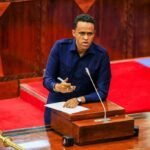Tanzania stands at a crossroads in its pursuit of industrialization. With ambitious projects like the Standard Gauge Railway (SGR) and the planned Bagamoyo Port, alongside a vibrant wave of youth-driven innovation, the nation’s journey toward becoming a middle-income economy by 2050 raises a critical question: Can market dynamics alone drive this transformation, or does Tanzania need assertive government intervention?
The SGR, envisioned to connect inland regions to key ports, promises to revolutionize trade logistics and reduce costs, potentially attracting foreign investment and boosting manufacturing. Similarly, the Bagamoyo Port project aims to become a regional maritime hub enhancing Tanzania’s strategic economic position.
On the innovation front, Tanzania’s young entrepreneurs are increasingly leveraging technology and creativity to spawn new industries, contributing to job creation and economic diversification.
However, challenges persist. Governance pitfalls, including bureaucratic inefficiencies, regulatory hurdles, and inconsistent policies, often dampen investor confidence and stall project implementation. Without coherent government steering, these large-scale initiatives risk faltering, and the full potential of market forces may remain unrealized.
Vision 2050 sets a roadmap that blends market-driven growth with proactive state-led planning, emphasizing infrastructure development, skills training, and institutional reforms.
This analysis explores Tanzania’s industrial dilemma, assessing whether the magic of free markets suffices or if a strategic government hand is indispensable for realizing the nation’s industrial aspirations.



